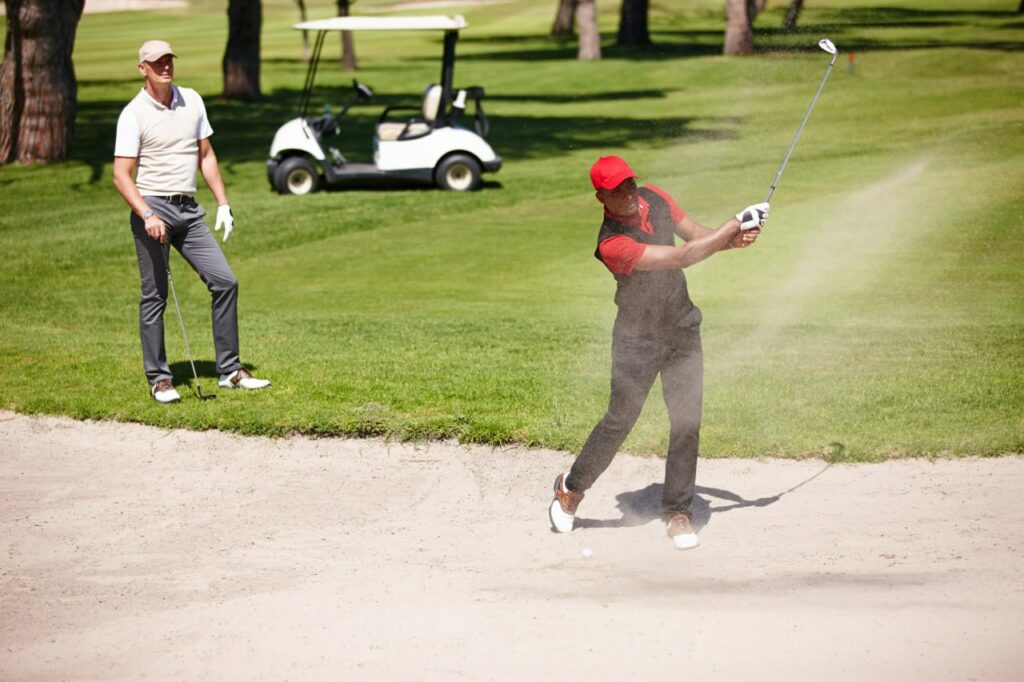Golf is an exquisite game that has a truly centuries-old history and a flair for true aristocracy. The game of golf is surrounded by many myths, superstitions and mysteries. Let’s dispel these prejudices together and learn about the game’s true history, modern popularity and rich heritage. We will also familiarize ourselves with the current problems of the game and its prospects for development.
The Origins and Evolution of Golf
Golf’s origins are often disputed, with some historians tracing its roots to ancient Rome, where a similar game involved hitting a feather-stuffed ball with club-like tree branches. However, the modern game of golf is widely recognized to have originated in Scotland during the Middle Ages. The first documented mention of golf was in 1457 when the Scottish Parliament, under King James II, banned the sport, fearing it interfered with military training. Despite its rocky start, golf flourished in Scotland, with the Old Course at St. Andrews, established in 1552, revered as the “Home of Golf.”
The 18-hole round, now standard in golf, was established at St. Andrews in 1764, setting a precedent for future courses worldwide. Golf’s popularity began to spread beyond Scotland in the 19th century, thanks to the British Empire and the advent of the railway system, making travel to remote courses like St. Andrews more accessible.

Golf’s Migration and Global Spread
The late 19th and early 20th centuries marked a significant era for golf as it began to spread globally. The first formal golf club outside Britain was established in Bangalore, India, in 1820. The sport then made its way to the United States, where the first 18-hole course was laid out on a Chicago sheep farm in 1893, leading to the foundation of the United States Golf Association (USGA) in 1894.
Golf Main Events
Golf boasts a calendar marked by prestigious events, with the Masters, U.S. Open, The Open Championship (often referred to as the British Open), and the PGA Championship being the most coveted, collectively known as the Major Championships. The Open Championship, the oldest of the majors, was first played in 1860 at Prestwick Golf Club in Scotland. The Masters, known for its exclusive venue at Augusta National, has been a tradition since 1934.
The Ryder Cup, another highlight, pits teams from Europe and the United States against each other, fostering a spirited rivalry that captivates golf fans worldwide.
Top Performers
Golf has been graced by many legendary players whose prowess and charisma have significantly shaped the sport. Jack Nicklaus, known as “The Golden Bear,” has an unparalleled record of 18 major championships, making him a towering figure in golf history. Tiger Woods, with his 15 major titles, revolutionized the game with his extraordinary skill and brought golf to a wider audience.
Arnold Palmer, with his charismatic personality and aggressive playstyle, won seven majors and became one of golf’s most beloved figures. These icons, along with others like Gary Player, Ben Hogan, and Annika Sörenstam, have left indelible marks on the sport, inspiring countless players and fans worldwide with their achievements, sportsmanship, and dedication to the game.

Technological Advancements and Golf
The evolution of golf equipment has significantly influenced the game. The transition from wooden to steel shafts in the 1920s, the introduction of metal woods in the late 20th century, and the advent of advanced ball technology have all contributed to longer drives and more precise shots, changing the way professionals approach the game.
Current Popularity
Today, golf remains a popular sport worldwide, with an estimated 60 million people playing on over 30,000 courses across the globe. Its appeal lies in its accessibility to all ages and skill levels, the challenge it presents, and the camaraderie it fosters among players.
Golf has also embraced inclusivity and diversity, with organizations like the LPGA (Ladies Professional Golf Association) promoting women’s golf. The sport’s return to the Olympics in 2016, after a 112-year absence, further underscored its global appeal and the widespread interest in the game.
The rise of international stars like Tiger Woods, Rory McIlroy, and Inbee Park has contributed to golf’s popularity, bringing diversity and dynamism to the sport. Woods, in particular, has had a transformative impact on golf, breaking racial barriers and becoming one of the most influential athletes in the sport’s history.
Despite its popularity, golf faces challenges such as the need for environmental sustainability, the pace of play, and making the sport more accessible to the younger generation. Initiatives like shorter formats, innovative golfing facilities, and youth engagement programs are being implemented to address these issues and ensure golf’s continued growth.
Economic Impact and Environmental Considerations
Golf contributes significantly to the global economy, not only through professional tournaments but also via tourism, real estate, and equipment sales. However, the sport faces environmental challenges, including water consumption and chemical runoff. In response, many courses have adopted sustainable practices, such as water conservation measures and the use of eco-friendly maintenance techniques.
Future Outlook
The future of golf looks promising, with technological advancements and innovative formats like speed golf and disc golf attracting younger audiences. The rise of golf simulators and virtual reality has also made the sport more accessible, allowing enthusiasts to enjoy the game regardless of weather conditions or geographical constraints.
Journey That Never Ends
Golf’s journey from the windswept dunes of Scotland to the lush greens of Augusta National tells a story of evolution, innovation, and enduring appeal. As the sport continues to adapt to the changing tastes and environmental concerns of the modern world, its essence remains unchanged – a game that challenges the mind, rewards precision, and fosters a deep connection with the outdoors. Golf, with its rich history and global following, remains a testament to the timeless allure of chasing a small ball across a vast landscape in pursuit of perfection.

